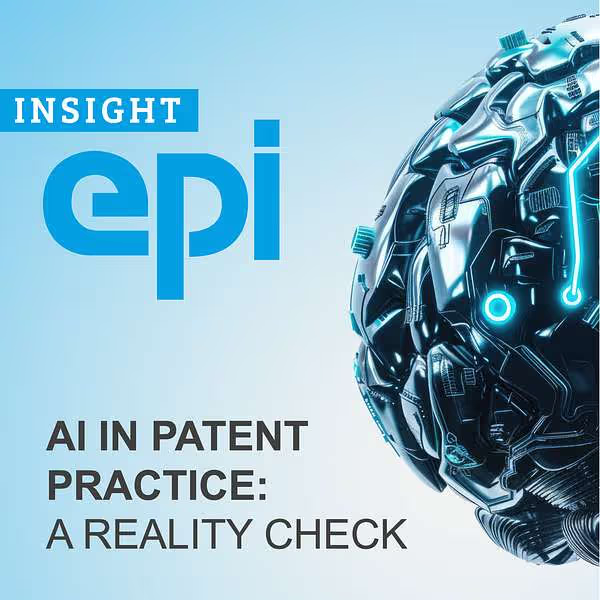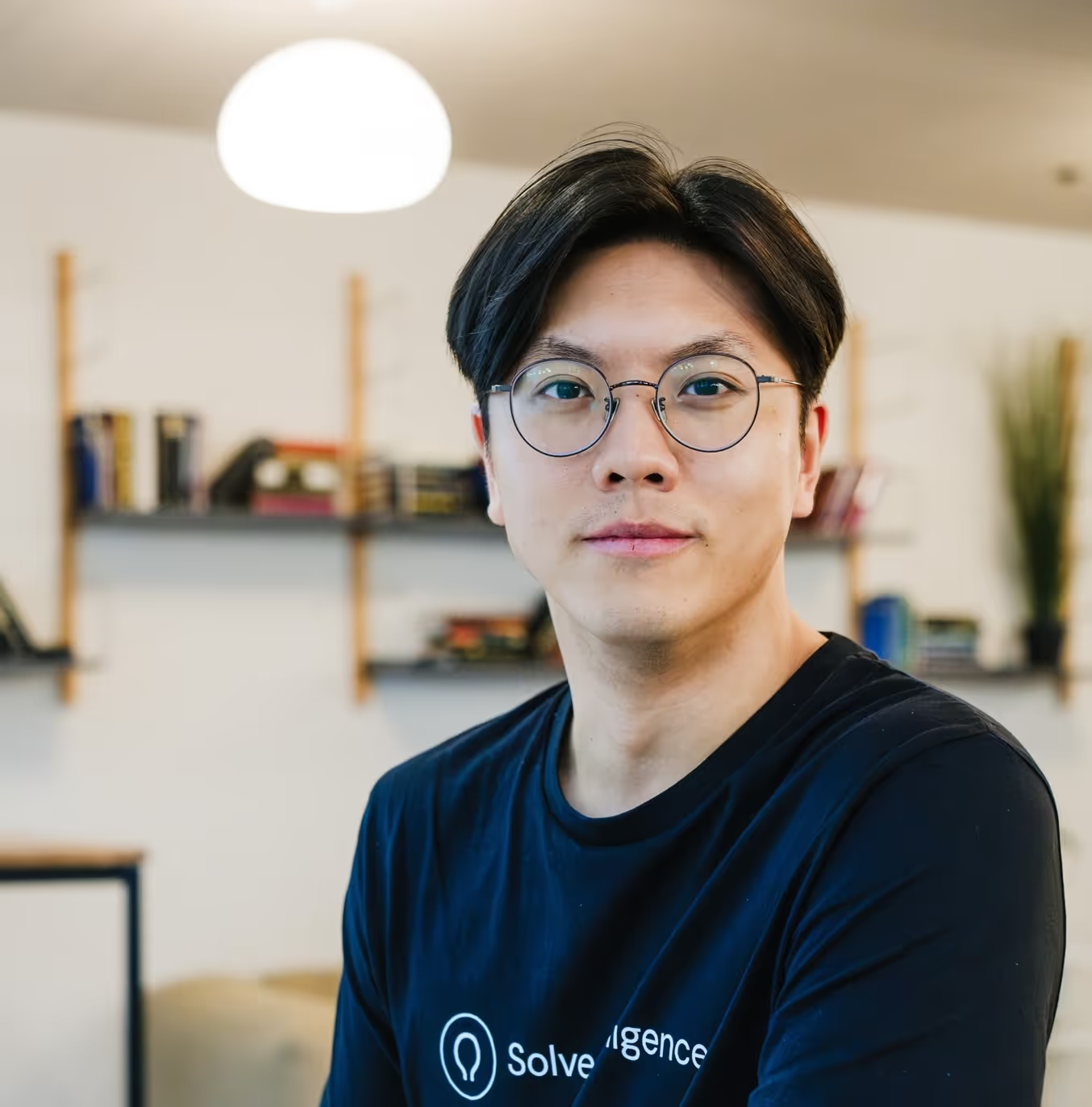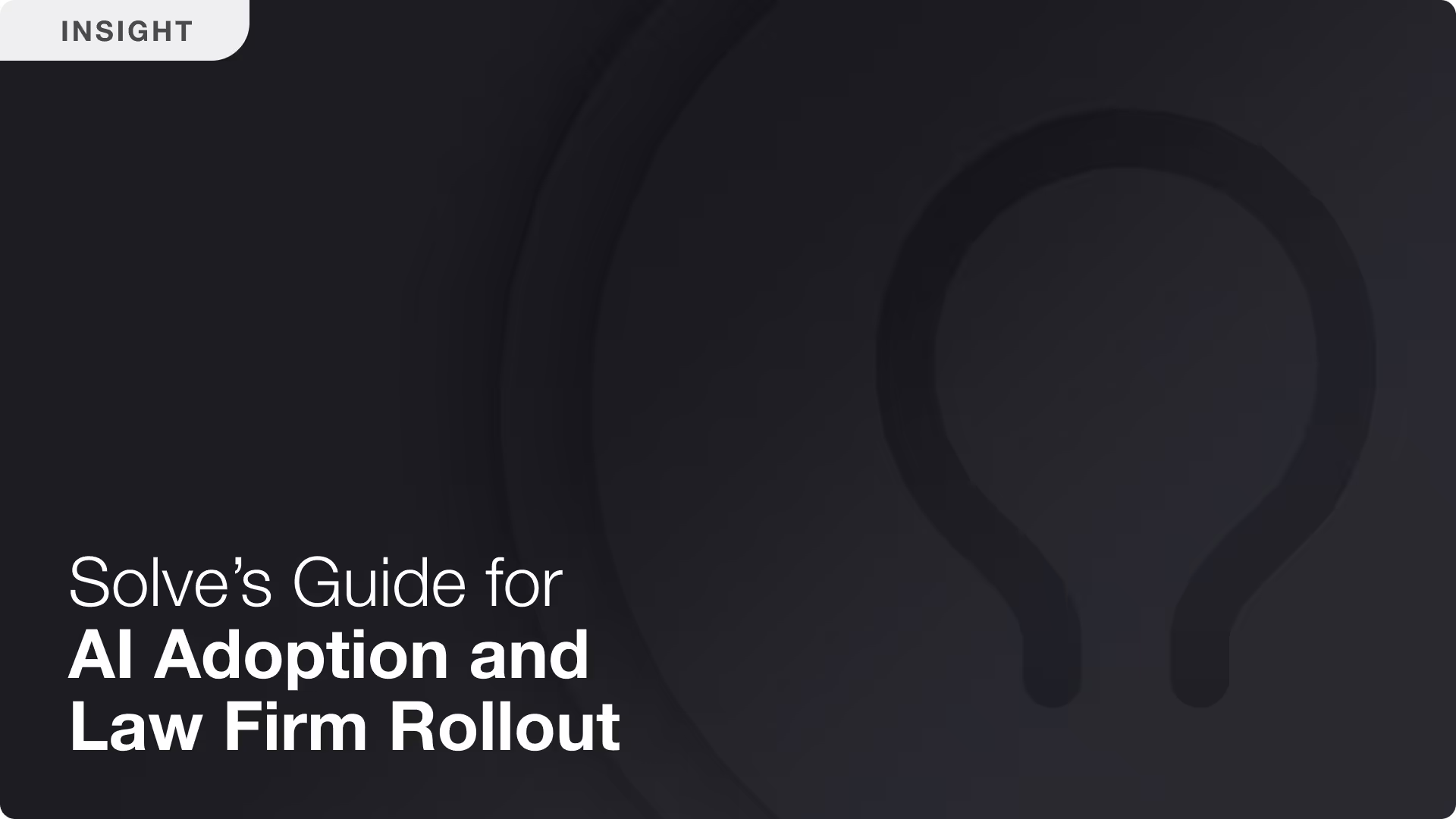EPI’s Podcast on How AI is Transforming Patent Practice
In a recent conversation between leading European patent attorneys, they confirmed what many of us were experiencing firsthand: AI has moved beyond the hype to become an essential tool that elevates both strategic capabilities and operational efficiency for patent practitioners. The evidence is compelling and the transformation is accelerating. Listen to the full podcast here.

Image from INSIGHT epi - The podcast for European patent professionals (AI in patent practice: A reality check)
Transforming Patent Workflows with Proven Performance Gains
The transformation is already happening across European patent practices. Leading practitioners on the Podcast, Johannes Schmid (Partner of Durm), Bastian Best (Founder of BestPatent) and Jan-Christian Schütte (Managing Partner of Noventive), report reducing traditional two-to-three-day drafting cycles to highly focused single-day efforts while maintaining — and often improving — quality standards. This represents a fundamental shift in how we approach patent drafting and resource allocation.
AI-powered patent drafting consistently delivers grammatically precise, professionally polished content that elevates the standard of patent applications. The linguistic refinement in eliminating spelling errors and awkward phrasing or terminology creates documents with a level of consistency and precision that impresses clients and fit for submission before the patent office.
Today's ecosystem features over 30 specialized AI patent drafting tools, spanning from integrated Word plugins to comprehensive platforms offering figure support. This ecosystem maturity demonstrates that AI integration has evolved from experimental technology to one that is essential in every practitioner’s toolkit.
Clients Embracing Enhanced Services
Both Jan-Christian and Bastian highlight that, most tellingly, client feedback has been overwhelmingly positive. Technology-forward companies, in particular, recognize the enhanced clarity and consistency that AI brings to patent applications. Clients appreciate the level of precision and consistency and often notice the improved quality.
Clients also welcome the strategic implications of AI efficiency. For lower-priority inventions that don't warrant extensive manual drafting, AI enables cost-effective patent protection without sacrificing thoroughness. This creates opportunities for broader IP strategies and more comprehensive portfolio development.
The speakers highlight that the key to successful implementation of AI is transparency. Clients trust attorneys who clearly communicate how AI enhances their work, positioning it as a tool that enables better service delivery rather than corner-cutting.
Attorneys are starting to see how AI enhances workflows when considered as a strategic drafting partner rather than a simple writing assistant. Context-rich engagement is crucial. The best results come from uploading invention disclosures, generating clarifying questions, incorporating prior art analysis, and reviewing AI-assisted figure interpretation. This comprehensive approach enables AI to serve as what the speakers called a "creative co-pilot."
The Professional Evolution
The most profound impact of AI in patent practice isn't efficiency — it's how it's redefining our professional value proposition. We're witnessing a fundamental shift from content creation to strategic judgment, from document drafting to commercially-focused advisory services.
It was noted in the podcast that this evolution frees attorneys to focus on uniquely human capabilities:
Strategic Claim Drafting: Defining meaningful claim scope that balances protection with enforceability and developing sophisticated fallback strategies for prosecution.
Enhanced Client Collaboration: Deeper engagement with inventors and technical teams, more strategic client consultation, and comprehensive portfolio development.
Quality Legal Oversight: While AI generates polished text, the strategic elements that define exceptional patent practice such as legal claim strategy, articulating the technical effect and story-telling remain firmly in our domain.
As one experienced practitioner emphasized, "Someone has to sign off. Someone has to think strategically. AI is a tool — not a substitute for expertise."
Addressing the Skills Question
The emergence of AI raises legitimate questions about professional development. The consensus is clear: core competencies remain essential, but the focus is shifting.
For new practitioners, the advice is unanimous: master traditional skills of drafting and prosecution first. Understanding how to manually craft claims, analyze prior art, and develop prosecution strategies provides the foundation needed to effectively evaluate and refine AI-generated content.
For experienced attorneys, success increasingly requires AI literacy to remain competitive. It’s essential to understand how to interact with the AI, evaluate output quality, and match tools to specific tasks.
Market Implications: Expansion Through Accessibility
Rather than shrinking demand for patent services, AI may actually expand the market. As costs decrease and efficiency improves, combined with AI becoming common in R&D practices, we're likely to see increased patent filings across industries, potentially leading to more prosecution work and opposition proceedings.
This effectively means patent protection becomes accessible to individual inventors, startups, and organizations previously priced out of higher quality patent services. The result could be a more diverse innovation landscape and expanded opportunities for patent professionals.
Best Practices for Implementation
Successful AI integration follows several key principles:
Strategic Tool Selection: Begin with benchmarked, high-performing solutions rather than experimenting broadly. Focus on tools that consistently deliver measurable improvements.
Template-Driven Consistency: Predefined templates tailored to specific technologies and client requirements ensure consistent quality while maximizing efficiency gains.
Internal Champions: Designating AI power users within teams creates centers of excellence that develop prompt libraries, quality standards, and best practices.
Maintain Professional Oversight: Never fully automate the drafting process. AI generates the foundation; human expertise provides the strategic architecture.
Looking Forward: Competitive Advantage Through Strategic Adoption
The transformation is accelerating, and the attorneys who embrace AI-assisted workflows while maintaining their essential expertise are positioning themselves for sustained competitive advantage.
At Solve Intelligence, we've designed our Patent Copilot specifically for this evolution and the future of private practice. Our platform combines AI capabilities while keeping attorneys in the driving seat to provide strategic oversight, enabling practitioners to focus on what truly differentiates their practice: deep experience, strategic thinking, and commercial advisory.
The evidence from leading European patent attorneys is unambiguous: AI represents a transformative opportunity and those who embrace these tools while maintaining their core expertise will be the ones defining the future of patent practice – one that is more strategic, efficient, and client-focused.
AI for patents.
Be 50%+ more productive. Join thousands of legal professionals around the World using Solve’s Patent Copilot™ for drafting, prosecution, invention harvesting, and more.




